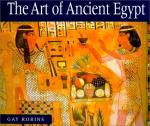|
This section contains 1,140 words (approx. 4 pages at 300 words per page) |

|
Use of Wigs.
Most scholars believe that some ancient Egyptian men and women often wore wigs regardless of the style of their natural hair. The more elaborate styles that artists represented for upper-class men and women were almost certainly wigs. Representations of rich women often include a fringe of natural hair at the forehead, under a wig, leading scholars to believe that it was a sign of wealth and status to wear a wig and that vanity had little to do with it. Most scholars assume that all people above a certain station were depicted with wigs on, yet it is not always clear whether the style in a statue, relief, or painting is a wig or is natural hair.
Men's Hairstyles.
During the Old Kingdom (2675–2170 B.C.E.), men wore both a close-cropped style and a shoulder-length style. The shorter style probably represents natural hair cut close...
|
This section contains 1,140 words (approx. 4 pages at 300 words per page) |

|




